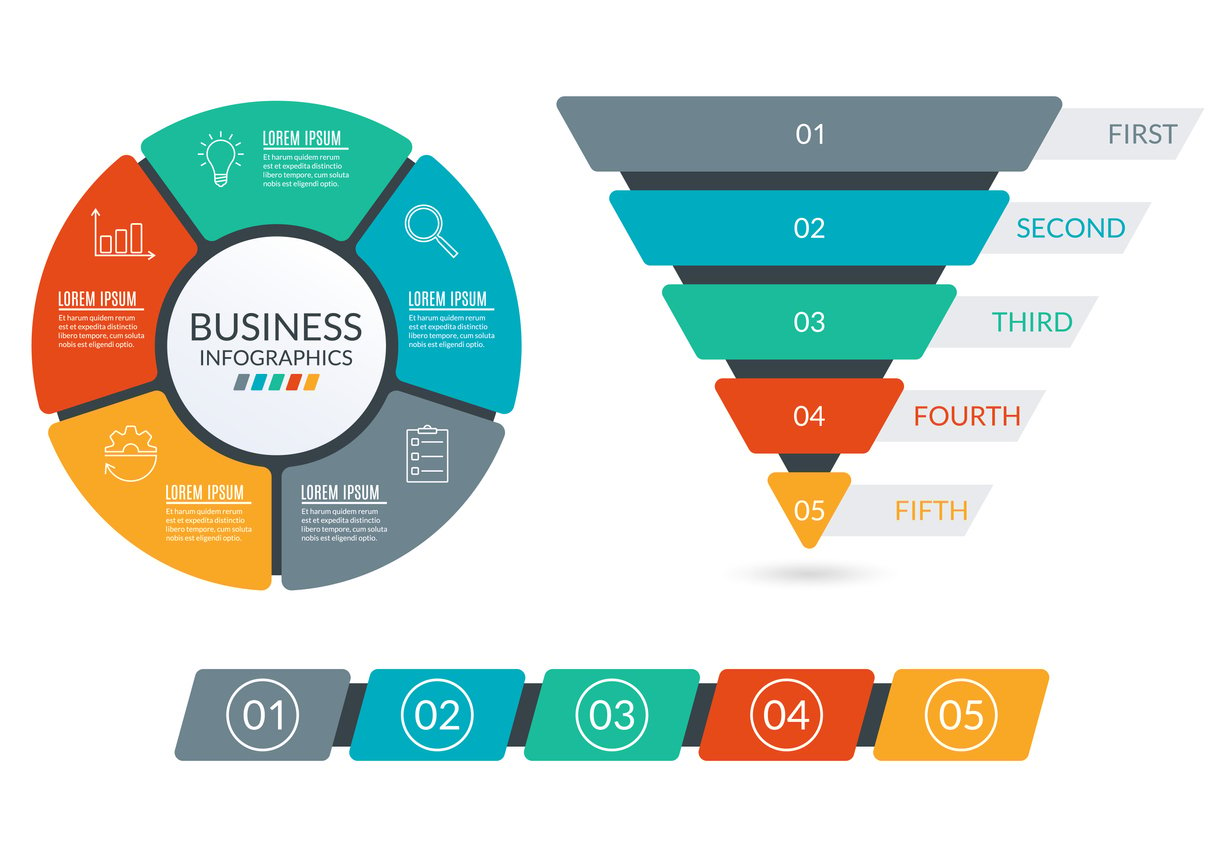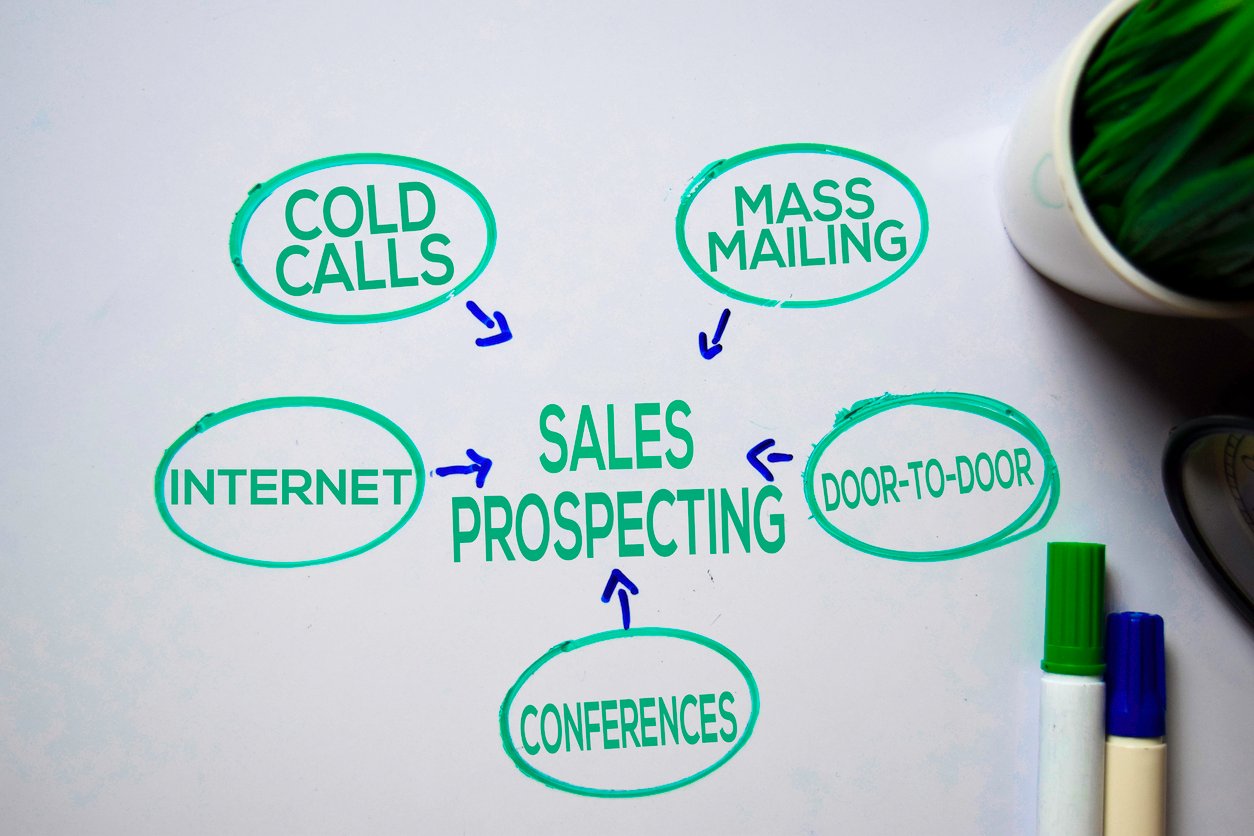
Boost Customer Engagement with 10 Types of Sales Promotion
 Updated on
Updated on
 By Carlos Correa
By Carlos Correa
Carlos Correa
Carlos has been involved in the sales space for well over ten years. He began in the insurance space as an individual sales agent, managing teams as s...
learn more
Carlos Correa
Carlos has been involved in the sales space for well over ten years. He began in the insurance space as an individual sales agent, managing teams as s...
Table of Contents
Table of Contents
In sales, every advantage counts. You constantly strive to grab attention, spark interest, and ultimately convert leads into loyal customers. But with so much competition, how do you stand out from the crowd?
This is where sales promotions come in. These versatile tools can be your secret weapon for boosting sales and customer engagement. We're not talking about a one-size-fits-all approach here. There's a whole treasure chest of sales promotion methods waiting to be explored, each offering unique ways to entice customers and close deals.
In this guide, we'll look into the various types of sales promotion, providing you with actionable insights and practical examples to elevate your marketing game. Get ready to explore the tools and tactics that can transform your promotional strategy and deliver impressive results.
What are Sales Promotions?

Sales promotions are marketing strategies designed to stimulate consumer purchasing and sales effectiveness through various short-term incentives.
Sales promotion encompasses a wide range of activities aimed at boosting product visibility, encouraging trial or usage, and increasing sales volumes. From discounts and coupons to contests and free samples, the methods of sales promotion are diverse and adaptable, tailored to meet specific business objectives.
These types of sales promotion are crucial in influencing customer behavior, providing immediate value, and creating a sense of urgency that can drive quick purchase decisions.
Goals of Sales Promotions
The various types of sales promotion serve multiple purposes, each aligned with broader marketing and business goals. Here are some of the primary objectives:
Increasing Sales
The most common types of sales promotion are designed to boost sales figures in the short term. Techniques such as limited-time offers, buy-one-get-one-free deals, and flash sales create urgency, prompting customers to make quick purchase decisions. By leveraging these sales promotion methods, businesses can generate a spike in sales, meet quarterly targets, or capitalize on seasonal demand.
Clearing Inventory
Another critical goal of different types of sales promotion is inventory management. Retail sales promotion ideas such as clearance sales and end-of-season discounts help businesses clear out old or excess stock to make room for new inventory.
These strategies are particularly effective for products that are perishable, seasonal, or have a limited shelf life. By employing these sales promotion methods alongside sales tools, companies can maintain an optimal inventory level, reduce holding costs, and minimize losses.
Attracting New Customers
Sales promotions are also powerful tools for customer acquisition. Special offers, free trials, and introductory discounts are designed to entice new customers to try a product or service. This method of sales promotion lowers the entry barrier, allowing potential customers to experience the product without significant financial commitment.
Additionally, promotions like referral programs and contests can expand the customer base through word-of-mouth and social sharing.
By understanding and utilizing these different types of sales promotion strategies, businesses can achieve various marketing objectives, from driving immediate sales to building long-term customers.
Benefits of Sales Promotions

The different types of sales promotion that we’ll cover are not just about immediate sales spikes; they offer a multitude of advantages that can significantly impact a business's overall marketing strategy and long-term success. Understanding these benefits is essential for leveraging the full potential of sales promotion methods.
Here's a closer look at some of the key benefits:
1. Driving Short-Term Sales
One of the most immediate benefits of sales promotions is their ability to drive short-term sales. By offering discounts, limited-time offers, or special deals, businesses can create a sense of urgency that encourages customers to make immediate purchases.
Research shows that 86% of consumers are willing to try a new product if they receive a coupon or discount. This strategy is particularly effective during peak shopping periods, such as holidays or end-of-season sales, where consumers are already inclined to spend.
Moreover, the sense of urgency or increased value created by a promotion can incentivize customers to make a purchase decision sooner rather than later. This is especially true for time-limited offers or flash sales, which capitalize on the fear of missing out (FOMO) psychology.
2. Enhancing Customer Engagement
While there are different types of sales promotion, they’re not just about one-off transactions; they can also be a powerful tool for building stronger customer relationships. Here's how:
- Increased Brand Interactions: Promotions can spark renewed interest in your brand, leading to more website visits, social media engagement, and customer inquiries.
- Trial and Experimentation: Offering free samples, trials, or introductory discounts can entice customers to try your product or service for the first time. This can be especially effective for new businesses or those introducing a new product line.
- Loyalty Programs: Reward programs that offer exclusive discounts or special offers can incentivize repeat purchases and encourage brand loyalty. Studies show that a 5% increase in customer retention can lead to a 25% to 95% increase in revenue.
Promotions like these also generate valuable customer data, which can be used to refine future marketing strategies and improve customer relationships.
3. Building Brand Awareness
You may have the best product, but without any awareness, it’s ineffective. That’s why sales promotions can be a great way to introduce your brand to a wider audience and increase brand awareness. Here are some strategies:
|
Strategies |
Description |
|
Strategic Partnerships |
Partnering with other brands for co-branded promotions can expose your product or service to a new customer base. |
|
Social Media Campaigns |
Leveraging social media platforms to promote your sales can significantly increase brand visibility. Eye-catching visuals and engaging content can capture attention and generate excitement around your promotions. |
|
Public Relations |
Strategic PR efforts around your sales promotions can generate positive media coverage and establish your brand as a leader in your industry. |
By implementing well-crafted sales promotions, you can not only drive immediate sales but also build long-term customer relationships and enhance your brand's overall position in the market.
Types of Sales Promotions

Sales promotions come in various forms, each designed to achieve specific marketing objectives. Here, we’ll discuss some of the most effective types of sales promotion, providing an overview, examples, and guidance on when to use each strategy.
1. Percentage Discounts
Percentage discounts are one of the most common and straightforward sales promotion methods. They involve reducing the price of a product or service by a specific percentage, such as 10%, 20%, or even 50%. This type of promotion is highly effective because it provides clear and immediate savings to the customer.
Examples:
- A clothing retailer offering 25% off all items during a seasonal sale.
- An online electronics store providing a 15% discount on purchases over $100.
Percentage discounts are particularly useful during peak shopping periods like holidays, end-of-season sales, or product launch events. They are also effective for clearing out excess inventory or attracting new customers to try a product or service for the first time.
2. Buy One, Get One (BOGO)
Another popular sales strategy is the Buy One, Get One (BOGO) promotion, in which customers receive an additional product free or at a discounted rate when they purchase a specified item. This type of promotion not only boosts sales but also increases the average order value.
Examples:
- A grocery store offering "Buy one, get one free" on select snack items.
- A shoe retailer promoting "Buy one pair of shoes, get the second pair at 50% off."
BOGO promotions are ideal for increasing product turnover, especially for items with shorter shelf life or seasonal products. They are also effective for encouraging bulk purchases and clearing out old stock.
Lastly, BOGO promotions are also ideal for increasing sales volume, particularly for products that are often purchased together or have lower profit margins. They can also be a great way to introduce new products by offering them alongside established ones.
3. Flash Sales
Flash sales create a sense of urgency by offering deep discounts for a very limited time, often just a few hours or days. This strategy leverages the fear of missing out (FOMO) psychology to drive immediate purchases.
Examples:
- An online fashion store hosting a 24-hour flash sale with up to 70% off on select items.
- An electronics retailer offering a one-day flash sale on smartphones and accessories.
Flash sales are perfect for generating a quick surge in sales and traffic to your store. They are often used during major shopping events like Black Friday or Cyber Monday and can be effective for promoting new product launches or clearing out inventory quickly.
4. Digital Coupons
Digital coupons are electronic vouchers that offer discounts on products or services. They can be distributed through email, social media, or mobile apps, making them easily accessible to consumers.
Examples:
- An e-commerce site emailing a 20% off coupon to subscribers for their next purchase.
- A restaurant chain offering a digital coupon for a free appetizer with the purchase of an entree through their mobile app.
Digital coupons are versatile and can be used to attract new customers, reward loyal customers, or boost sales during slow periods. They are also effective for driving traffic to online stores and increasing engagement on digital platforms.
5. Rebates
Rebates are a form of sales promotion where customers receive a partial refund after purchasing a product. This refund is usually processed after the customer submits proof of purchase and any required documentation.
Examples:
- A home appliance store offering a $50 mail-in rebate on the purchase of a new refrigerator.
- An electronics manufacturer providing a $100 rebate on select laptops, redeemable through an online submission.
6. Loyalty Programs
Loyalty programs reward repeat customers for their continued patronage. These programs can take various forms, such as point-based systems, tiered rewards, or exclusive membership benefits. Examples include airline frequent flyer programs, retail store reward cards, and subscription services offering perks to long-term users.
Loyalty programs are ideal for businesses looking to increase customer retention and encourage repeat purchases. They are particularly effective in competitive markets where customer loyalty is crucial.
7. Contests
Contests engage customers by offering them a chance to win prizes in exchange for participation. These can range from simple social media giveaways to elaborate competitions requiring creative submissions. Examples include photo contests, trivia challenges, and sweepstakes.
Contests are effective for generating buzz and increasing brand awareness. They are particularly useful when launching a new product, promoting a seasonal campaign, or trying to boost social media engagement. Contests can attract a broad audience, encouraging user-generated content and word-of-mouth marketing.
8. Free Trials
Free trials allow customers to try a product or service at no cost for a limited time. This approach is common in industries such as software, fitness, and subscription-based services. Examples include a 30-day trial for a software application, a week of free gym access, or a free month of a streaming service.
Free trials are best used when launching a new product or service, particularly if the offering has a unique value proposition that needs to be experienced firsthand. They are also effective for businesses aiming to convert hesitant prospects into paying customers by reducing the perceived risk of purchase.
9. Bundling
Bundling involves selling multiple products or services together at a discounted price. This strategy can include related products or complementary services that enhance the overall value proposition. Examples include electronics retailers offering a discount on a computer with the purchase of a printer, or beauty brands selling skincare sets at a lower combined price.
Bundling is ideal for increasing the average order value and encouraging customers to purchase more items. It is particularly effective during special promotions, holiday seasons, or when trying to clear inventory of related products. Bundling can also introduce customers to new products they might not have considered purchasing individually.
10. Seasonal Sales
Seasonal sales capitalize on specific times of the year when consumer spending tends to increase. These promotions can include holiday sales, back-to-school discounts, and end-of-season clearances. Examples include Black Friday deals, summer clearance events, and holiday-themed promotions.
Seasonal sales are best used to align with key shopping periods and capitalize on heightened consumer interest. They are particularly effective for attracting new customers, clearing out seasonal inventory, and boosting short-term sales. Seasonal promotions can also help create a sense of urgency, encouraging customers to take advantage of limited-time offers.
Implementing Sales Promotions

Successfully implementing the different types of sales promotion above requires meticulous planning, coordinated execution, and thorough evaluation. And here’s how to do just that:
1. Planning and Preparation
Here, you can employ these basics:
- Developing a Promotional Calendar: Create a comprehensive calendar outlining your planned promotions throughout the year. This calendar should consider upcoming holidays, seasonal trends, and competitor activity.
- Coordinating with Marketing and Sales Teams: Clearly define each promotion's goals and ensure both marketing and sales teams are aligned on messaging, target audience, and execution strategies.
2. Promotion Execution
Now, it’s time to execute:
- Effective Communication and Advertising Strategies: Craft clear and compelling messaging that highlights the value proposition of your sales promotion. Utilize various marketing channels, such as social media, email marketing, and targeted advertising, to reach your target audience.
- Ensuring Seamless Execution Across Channels: Maintain consistency in your messaging and branding across all promotional channels. This ensures a cohesive customer experience, regardless of how they encounter your sales promotion.
3. Monitoring and Evaluation
Last but certainly not least, do these:
- Tracking Performance Metrics: Closely monitor key performance indicators (KPIs) such as sales volume, conversion rates, and customer engagement. Utilize website analytics tools and CRM systems to track coupon codes and measure the effectiveness of your campaigns.
- Gathering Customer Feedback: Actively seek customer feedback through surveys, reviews, and social media interactions.
- Analyzing Results and Making Adjustments: Identify what worked well and what areas need improvement, and adapt your strategies for future sales promotions.
Conclusion
Sales promotions are powerful tools for driving short-term sales, enhancing customer engagement, and building brand awareness. By understanding and strategically implementing various types of sales promotion—businesses can achieve their marketing objectives and gain a competitive edge.
Effective implementation requires careful planning, seamless execution, and thorough monitoring and evaluation to ensure success and continuous improvement.
Ready to elevate your sales promotions to the next level? With Ringy CRM, you can streamline and optimize your promotional efforts with ease. Ringy offers robust features that assist with different types of sales promotion, including:
- Automated Campaigns: Schedule and manage your promotional calendar effortlessly.
- Customer Segmentation: Target the right audience with personalized offers.
- Performance Tracking: Monitor key performance metrics and gather customer feedback in real-time.
- Multi-Channel Integration: Ensure seamless execution across email, SMS, and social media channels.
- Comprehensive Analytics: Analyze results and refine your strategies for continuous improvement.
Take the first step towards more effective sales promotions and enhanced customer engagement. Sign up for Ringy CRM today and transform your promotional strategy!

Skyrocket your sales with the CRM that does it all.
Calling? Check. SMS? Check. Automation and AI? Check. Effortlessly keep in touch with your customers and boost your revenue without limits.

Take your sales to new heights with Ringy.
Sales in a slump? Ringy gives you the tools and flexibility you need to capture leads, engage with them, and turn them into customers.
Subscribe to Our Blog
Enter your email to get the latest updates sent straight to your inbox!
Categories
Related Articles



































































































